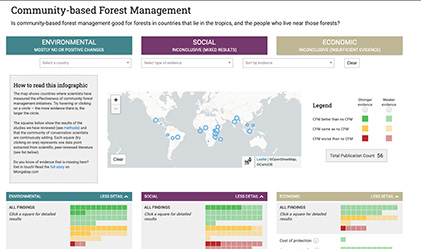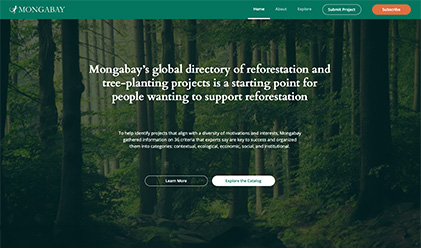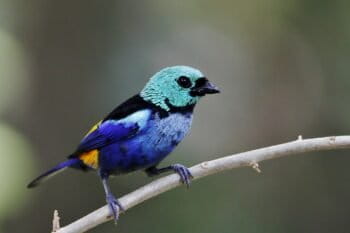
- Mongabay and Earth Genome detected 67 clandestine airstrips used for transporting drugs in the Peruvian regions of Ucayali, Huánuco and Pasco.
- The analysis used artificial intelligence (AI) and satellite imagery cross-referenced with official sources and on-the-ground observation to verify that each airstrip is associated with narco activity.
- Thirty-one airstrips are concentrated in Atalaya, which has become one of the most violent provinces in the Amazon.
- Most of these illegal airstrips are located in and around Indigenous communities, reserves for people living in voluntary isolation and forest concessions.
A distressed voice speaks on the other end of the phone, calling from an Indigenous territory in the Peruvian Amazon. “They are trying to take off again; please tell the Dirandro. Please, I do not want to have problems in my community,” an anonymous member of an Indigenous community says. The caller requests the presence of officials from the antidrug department of the Peruvian National Police (Dirección Antidrogas de la Policía Nacional del Perú, or Dirandro, in Spanish) while watching an unknown airplane in the distance, hidden in the forest. In the darkness, without anyone being able to see him, he anxiously recounts that a group of men prepared a shipment of drugs on an illegal airstrip built in his community’s territory. His desperation is evident, especially because he knows that his community is facing a gigantic monster embedded in Ucayali, a region that has become a new hotspot of drug trafficking in the country.
This call for help is one of many that are coming from several Indigenous communities in the Peruvian rainforest that live surrounded by illegal activity. The leader who had the courage to talk is one of the more than 60 journalistic sources interviewed by Mongabay, as part of a year-long investigation that managed to confirm the existence, and the episodes of violence behind the use, of 76 unauthorized airstrips in six Amazonian regions: Ucayali, Huánuco, Pasco, Cusco, Madre de Dios and Loreto. Sixty-seven of them were in the first three regions, where the majority of Indigenous leaders have been killed in the past four years, since the pandemic.

Each of these illegal airstrips in the forest was detected or corroborated by Earth Genome, an organization based in California, United States, specializing in satellite image analysis. Mongabay’s collaboration with Earth Genome is supported by the Pulitzer Center. The reporting team developed a search tool called the Earth Index that used Artificial Intelligence (AI) to review large volumes of satellite images to detect clandestine airstrips in the Peruvian Amazon.
For the analysis to work, the team gathered and combined information from OpenStreetMap with data from official airstrips reported by the Ministry of Transport and Communications and with samples of narco airstrips identified by Dirandro and the Regional Government of Ucayali. With all these training data, a computer vision AI was able to track similar patterns in the territories Mongabay investigated.
Artificial intelligence is “asked to look for similar characteristics in the satellite images”, explain the specialists, who set themselves the task of detecting new illegal airstrips hidden in the forest. The experts describe the difficulty of this search: “Locating an airfield from space in the Peruvian Amazon is like finding a toothpick hidden in a misshapen soccer field, like locating it among the grass, weeds and bare earth.”
Once the satellite analysis was complete, each potential airstrip detected was verified with local and official sources by Mongabay, which confirmed the location, extension, use, date of opening, presence within prohibited areas (such as protected areas, Indigenous reserves and forest concessions), as well as the proximity to roads and rivers.
Satellites, which repeatedly take photographs of the planet, make it possible to clearly establish timeline details such as when a clandestine airstrip was opened, since it is enough to compare the airstrip detected by the search tool developed with AI with a previous image of the same place when the forest was still standing.
The satellite analysis of the airstrips that were detected confirms the existence of drug-trafficking routes that are outside of authorities’ control. The ease with which the destroyed airstrips are rebuilt is proof of this. According to Peruvian National Police Colonel James Tanchiva, head of the Division of Maneuvers Against Illicit Drug Trafficking in Pucallpa, drug traffickers hardly take one week to resume their operations if their airstrips become disabled. “The organizations that traffic drugs have good logistics, have their militant branch and have money. That is the reality,” Tanchiva added.
The reality also indicates that this illegality goes beyond drug trafficking. “We are in a period when crimes in Peru are converging, because this is no longer just a drug-trafficking issue, but [an issue] of several crimes that are being managed and run together,” said Luisa Sterponi, Integrated Illicit Crops Monitoring System( SIMCI) Peru project coordinator from the U.N. Office on Drugs and Crime (UNODC). A report from June 2024, which Sterponi co-authored, stated that in the last three years, annual forest loss and the number of confiscations of illegal timber have increased, and there has been an intense expansion of illicit coca crops. “The number of laboratories for processing cocaine byproducts destroyed by the antidrug police has been the highest in the country, accompanied by an exponential increase in unauthorized airstrips.”
Surviving in the ‘triangle of death’
The bleak outlook created by the drug airstrips is clearly visible in the Huánuco, Pasco and Ucayali regions. In fact, the Earth Index revealed a high concentration of unauthorized airstrips in a space that could well be called the “triangle of death.” These airstrips and illicit coca crops are the scene of the killings of at least 11 Indigenous leaders and community members, according to the National Coordinator for Human Rights (CNDDHH), although that figure is 15 according to the Interethnic Association for the Development of the Peruvian Rainforest (AIDESEP). Sources from the area, however, say there were some additional deaths that went unreported for fear of retaliation.
“I know of two Indigenous brothers murdered in 2023 and one who has disappeared this year,” said a leader of an important Indigenous federation in the area, who asked to remain anonymous. The bloodshed and disappearances are part of the violence endured by 28 Indigenous leaders who are under threat in the three regions, according to the mapping completed by the AIDESEP Regional Organization of Ucayali.

Not only do the illegal airstrips cut through land and drive deforestation, but they also sow seeds of terror. The satellite images provide concrete evidence of this reality. Of the 67 narco airstrips detected by the Earth Index in Huánuco, Pasco and Ucayali, 30 are within Indigenous communities and 26 are in areas that surround them. Seven territories have not only been invaded by airstrips, but are also surrounded by them. Another relevant fact: The coca crops in the three regions span a total of 18,742 hectares (46,300 acres): 12,221 (30,200 acres) in Ucayali, 4,960 (12,250 acres) in Huánuco and 1,561 (3,857 acres) in Pasco, according to the most recent coca monitoring data from the National Commission for Development and Life without Drugs (DEVIDA). In the case of Ucayali, coca production tripled since 2020, and in Huánuco, it doubled.
To get a clearer idea, this is an area 76 times the size of the Cusco historic center.
The investigation also allowed researchers to confirm that the 67 unauthorized airstrips are used for drug trafficking. At least 50 people interviewed — including local and official sources, in addition to important leaders from three Indigenous federations in the Peruvian Amazon — were the key to determining the airstrips’ precise use.
In the middle of these drug trafficking routes live Indigenous communities whose members were distraught as they described the abrupt cultural shift that has been brought to their land.

Some communities have needed to share their territory with tenant farmers who work with illegal crops. They are responsible for transporting drug shipments, guarding laboratories or preparing new airstrips. Silence is the only way to survive when people witness these scenes. Meanwhile, they must become accustomed to their routines coming to a halt with each flight. “When an airplane is going to land to be loaded with drugs, all traffic stops. The population, too. It does not happen very frequently, but that is how we live,” said an Amazonian leader who lived in a community in Atalaya province but had to abandon his territory for safety.
A calculation by Mongabay, based on data from the satellite monitoring platform Global Forest Watch, shows that to build the more than 67 airstrips, at least 109 hectares (270 acres) of rainforest had to be deforested. However, Sterponi of UNODC Peru explained that the presence of unauthorized airstrips in Amazonian communities has consequences beyond the environmental impact of deforestation. “The construction of an unauthorized airstrip is much bigger than what one can imagine. They have a direct impact on deforestation, but the real impact is broader and also involves social aspects.”
Miguel Guimaraes, vice president of AIDESEP, is convinced that the fight against illegality cannot be based exclusively on repression. “This is not just about trying to drive out the people who work in illegal activities, but to [ensure] that that site is not invaded again and that they don’t return, concrete social and civil actions must be carried out,” Guimaraes said. Otherwise, “it is very easy to reopen the unauthorized airstrips that were destroyed, because in that area (Ucayali), in the next five years, the authorities will not enter again,” Guimaraes added.
Residents of two communities located between Huánuco and Pasco live alongside 15 drug airstrips in and around their territories. The oldest of these airstrips was opened in December 2015, and the newest was opened in February 2023.




“There are airstrips, not inside the community, but around it. The government knows how many airstrips there are and where they are. In Constitución, there are more than 100,” an Indigenous leader from the area said.
The two communities that Mongabay visited have the misfortune of living in the middle of one of the drug-trafficking routes that begins in the city of Constitución. According to Florencio Carrillo, an official from the La Merced Zonal Office of DEVIDA, Constitución is an axis of drug trafficking where “all evils” come together and “violence, extortion and murder” are part of the routine. The communities also live in a central area of the rainforest, where the subbasins of the Pichis, Palcazu and Santa Isabel rivers and part of the Pachitea River converge.
What factors are behind the increase in unauthorized airstrips in this area? In the face of political and military pressure in the Apurimac, Ene and Mantaro River Valley (VRAEM) — where more than 38,000 hectares (93,900 acres) of coca crops are concentrated (the largest amount on a national level) — criminal groups need to move their drug transportation to another point. These new commercial spaces are what we call the “triangle of death” and where a so-called “balloon effect” can be seen. In other words, when one section of a territory is pressed on, the activity immediately moves to another section.

Nicolás Zevallos, public affairs director at the Institute of Criminology and Violence Studies, explained that the area provides two advantages. The first is the logistical and operational ease of transferring drugs from Peru to Bolivia, due to the proximity of this area with the neighboring country. The second advantage is the possibility of evading police and military control.
“Operating inside the VRAEM, which produces much more cocaine than the rest of the entire region, is almost impossible in terms of flights and mobilization; therefore, it is much simpler to move two or three districts higher and put the available airstrips in the areas of Atalaya, Pichis-Palcazu-Pachitea and Aguaytía,” Zevallos said.
This is why gangs search for the most remote, and least accessible, places, such as Indigenous communities and reserves for Indigenous peoples living in isolation.
In the Native communities that surround the Kakataibo Indigenous Reserve, the Earth Index detected three unauthorized airstrips: one inside the reserve itself and one around it, both in the northern part; and another one very close to the southern part of the protected territory. This was verified by a team of journalists who traveled to that area.
Three other landing strips were confirmed in two Indigenous reserves: one in and around the Murunahua Indigenous Reserve; and a third around the Kugapacori, Nahua, Nanti Territorial Reserve. In these areas, strips of deforestation can be easily seen close to rivers and in the middle of a dense forest.
“It is terrible that there are unauthorized airstrips in so many Indigenous reserves; that means that the government cannot guarantee the effective protection of any of them,” said Vladimir Pinto, Peru field coordinator for Amazon Watch.
In a community near the Kakataibo North and South Indigenous Reserve, an Indigenous leader told Mongabay that “their territory is cornered” and that local and regional authorities do not attend to their complaints. Only the Indigenous guard is making an effort to liberate their communal territory from the presence of drug trafficking and other illegal economies. This is repeated in each of the communities adjacent to the reserves of Indigenous Peoples in Isolation and Initial Contact.
“The Indigenous guard conducts inspections, destroys maceration pits and burns crops, but there are so many,” a source in the territory said.

The business of narco airstrips
Residents of the province of Atalaya, in Ucayali, are very familiar with how drug traffickers operate. Testimonies describe this industry as a planned and well-articulated business, and one in which airstrips play a fundamental role. In fact, Devida considers Atalaya to be one of the places with the highest concentration of unauthorized airstrips in the entire country, and it is one of the territories in which the algorithm detected one of the highest concentrations of illegal airstrips.
A person can only travel to Atalaya with warnings: Do not talk to strangers, only travel with others, stay for a short time and always try to remain unnoticed. The point is clear: Don’t trust anyone. Once in the area, these warnings are no longer an exaggeration. For Mongabay journalists, they prefaced the difficulty of finding sources willing to talk. Most of them asked to remain anonymous.

The team of journalists managed to travel to an unauthorized airstrip that was recently built on cleared land. “It is 985 meters [3,200 feet], a big cancha [soccer field],” as many call the narco airstrips in this part of the Peruvian Amazon.
The people in charge of “facilitating” the arrival and departure of the airplanes loaded with drugs are often people who live in the area and who have managed to settle inside these Native communities, according to a motorcyclist from the area. This work involves ensuring that the drug traffickers have an unauthorized airstrip available to them so that each operation can be carried out without any issues.
“Every day, up to four flights can take off. At times, while one airplane is being loaded with drugs, another is taking off. Each operation should take five minutes at the most. So, one single organization could leave with up to 1,200 kilos [2,645 pounds] of cocaine per day,” a local source said to a reporter who visited Atalaya.

The 31 narco airstrips detected by the Earth Index in Atalaya province are only one aspect of the situation. The worst is endured by the Indigenous communities when they resist or oppose the illegal operations. They become an obstacle for gangs — even more so because 13 of the 31 illegal airfields in Atalaya are within their territories and 13 are surrounding them. In many cases, community guards are the first line of defense.
However, combating such a powerful adversary without help is impossible. Criminal organizations, according to experts, often restructure themselves and change their strategies. Now, for example, they outsource some of the tasks in their chain of illegal activities, which makes it more difficult for the police and the army to track down those responsible.
An initial transformation occurred with the arrival of Mexican cartels, which led to the use of an outsourcing system, according to Zevallos. “Now, it is even more fragmented, to the point that it is basically brokers who control the transport of drugs from one point to another, but they do not have complete control of the entire chain. Instead, they use various suppliers,” Zevallos said. He added that in Peru, although there are some large laboratories that produce cocaine, the vast majority are small laboratories that produce smaller amounts of drugs that are collected until they get a “kind of important” shipment.
Zevallos explained that for this fragmented system to function, transnational criminal organizations send a person who serves as a connection with drug-producing countries, such as Peru. That person hires and coordinates with those responsible for collecting and transporting the drugs, then leaves.
Sterponi of the UNODC agrees that different phenomena related to drugs are being observed. These include the appearance of smaller specialized criminal groups that provide services directly to drug traffickers, as well as cross-border criminal groups, such as the Comando Vermelho and the First Capital Command (Primer Comando da Capital in Spanish), which are entering Peruvian territory through Brazil. “Those criminal groups dedicated to illicit drug trafficking are also focused on other crimes. The convergence of crimes within organized crime groups is increasing very much.”
Noam López, a lecturer at the School of Government and Public Policy at the Pontifical Catholic University of Peru and safety researcher at the Institute of Social Analytics and Strategic Intelligence PULSO PUCP attempted to summarize it. “There are organized crime groups set up in the country that are in all the illegal economies at the same time. What should be kept in mind is that these people have knowledge of the territory and they know how to deal with the authorities.” He explained that there is usually a leader who develops a strategy, and if it is successful, he replicates it time and time again: “A leader organizes all of these activities. So, imagine that he has a group of 30-50 young people who have knowledge of the territory. When he does well in one place and has everything organized, he goes to another area. That is what is happening.”
“This is not just about trying to drive out the people who work in illegal activities, but to [ensure] that that site is not invaded again and that they don’t return, concrete social and civil actions must be carried out,” – Miguel Guimaraes, vice president of AIDESEP
The specialist said that the transfer of knowledge is quick and that if anyone dies, that person is replaced immediately, because there are other people who already know the system. “This is why if you destroy airstrips, they return to rebuild them and fly airplanes very quickly.” The strategy, according to López, includes the creation of money laundering companies. “Our attention must be on organized crime, money laundering and everything that has to do with illicit [financial] flows because it is an international and multi-product business,” Sterponi said.
Where do the drugs originating in this area of Peru go? An agent from the tactical operations area of the Division for Maneuvering against Illicit Drug Trafficking in Pucallpa told Mongabay that Cessna airplanes — displaying the Bolivian flag — land in Atalaya to transport shipments of between 300 kg and 350 kilograms (660 lbs and 770 lbs) of cocaine. They are often headed for the department of Beni and, in some cases, after stopping in that northern Bolivian region, they continue flying toward Brazil. At times, they also fly to Colombia, according to Tanchiva of the antidrug department in Ucayali.
In response to a request for information, the central office of the antidrug department of the Peruvian National Police stated that between 2013 and 2022, they destroyed 705 unauthorized airstrips in the regions of Huánuco, Pasco and Ucayali. These interventions increased between 2019 and 2020, the most critical years in terms of the pandemic and of the violence in those territories. Additionally, 12 small airplanes destined for drug trafficking in the three regions were destroyed, and 19 aircraft were reportedly damaged between 2012 and 2022.

‘High-flying’ concessions
“They should create a VRAEM-type operations center in Ucayali because drug trafficking is now unsustainable. We have learned to coexist, as long as we do not interfere with them,” the representative of a forest concession in which an unauthorized airstrip was detected said to Mongabay. Despite the complaints reported by the representative, he claimed that authorities had not taken action.
Upon viewing the satellite images of the drug airstrips detected inside forest concessions in Ucayali, it is notable that there are patches of illicit coca crops overlapping in them. Six of the 10 illegal airstrips in the provinces of Atalaya, Coronel Portillo and Padre Abad are in the middle of coca crops.

The analysis showed that within a 2-kilometer (1.2-mile) radius, there are at least 27 hectares (66.7 acres) of illegal crops bordering the drug airstrips. This is almost 38 times the area of the National Stadium of Peru.
Rolando Navarro, the former executive president of Peru’s Agency for the Supervision of Forest Resources and Wildlife (OSINFOR) and expert from the Center for International Environmental Law, said the presence of drug airstrips and illegal crops in forest concessions may be a serious indicator of the link between illegal logging and drug trafficking.
“The holders of the concessions are custodians of the forest and are responsible for informing authorities and filing a complaint when there is an invasion and when they encounter illicit crops or unauthorized airstrips,” Navarro said. At least six of the nine holders reported findings and said the authorities did not attend to their complaints, according to reports from OSINFOR. It is worth noting that today, only four of the nine concessions are active; the enabling titles for the rest have expired.
Franco Navarro, of the Regional Government of Ucayali, told Mongabay that during flyovers in 2023, up to 21 unauthorized airstrips were detected inside forest concessions and that all the information was sent to the respective concession holders and to the corresponding authorities. These included the Dirandro and the Provincial Prosecutor Specializing in Illicit Drug Trafficking Crimes in Ucayali. However, a Pucallpa antidrug agent claimed that he had never received any “document from any company with a forest concession that reports an airstrip on those lands.” While the responsibilities shift from one side to the other, additional airstrips continue to be built.
Of all the airstrips built within forest concessions, five were built between 2020 and 2021, in the middle of the COVID-19 pandemic. During this time, forest audits were significantly reduced due to restrictions on field work.
“There are 36 Indigenous leaders [who were] murdered, and this number will increase as long as the underlying problems remain unsolved. This is going to continue,” said Guimaraes of AIDESEP, who cited an even higher number of crimes than the number identified by the CNDDHH.
*The names of some of the people who were interviewed and who participated in the reporting, as well as all of the Indigenous communities, were changed or omitted for their safety. This was discussed with the Regional Organization AIDESEP Ucayali (Orau).
This investigation was conducted in partnership with the Consortium to Support Independent Journalism in the Region (CAPIR), which leads the Institute for War and Peace Reporting (IWPR) in Latin America.
This story was first published by Mongabay Latam in Spanish on Nov. 12, 2024.



















